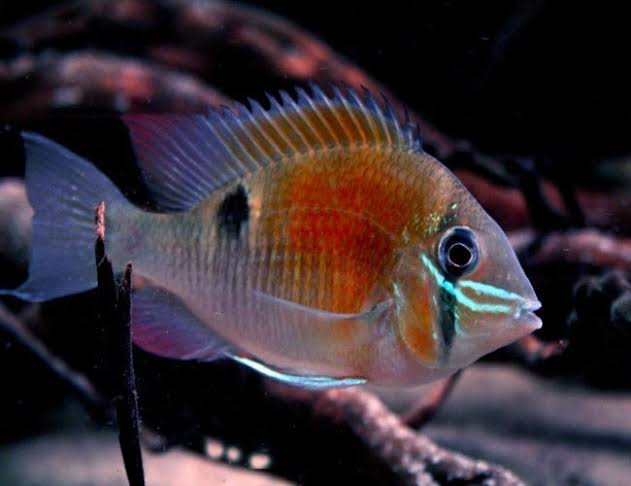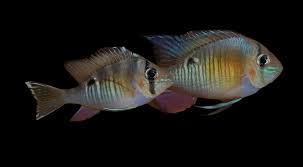1
/
of
2
Top Fin Aquatics
Cupid Cichlid - Wild Caught
Cupid Cichlid - Wild Caught
Regular price
$79.99
Regular price
Sale price
$79.99
Unit price
/
per
Tax included.
Shipping calculated at checkout.
Couldn't load pickup availability
Cupid Cichlid Care Guide
The Cupid Cichlid is a peaceful and stunning addition to a well-maintained aquarium. While generally gentle, they may become territorial during breeding. They thrive best in groups within a large, softwater aquarium featuring a sandy substrate.
Overview
- Scientific Name: Geophagus cupido
- Synonyms: Green Streaked Eartheater
- Distribution: Bolivia, Brazil, Guyana, and Peru
- Maximum Size: 13.5 cm (5.3")
- Temperature Range: 23-28°C
- Water Parameters: Soft, acidic water with a pH of 5.0-7.0 and hardness up to 12 dH
- Lighting: Dim lighting, or brighter if diffused with plants
- Sexual Dimorphism: Males are larger, deeper-bodied, and develop extensions on the caudal and dorsal fins
- Compatibility: Best suited for specialist community tanks
Description & Habitat
Native to the calm pools and backwaters of the Amazon, Guyana, and Orinoco river systems, the Cupid Cichlid requires a well-established aquarium with specific care:
- Substrate: Use soft sand, as they enjoy sifting through it for food.
- Decor: Provide driftwood tangles, rocky caves, and hardy plants like Anubias or Java Fern secured to the wood.
- Filtration & Maintenance: Ensure efficient filtration with minimal water movement. They are highly sensitive to pollutants, so frequent small water changes are essential to maintain water quality.
- Behavior: These cichlids thrive in groups of 8 or more, allowing for natural hierarchies. Avoid pairing them with boisterous or overly aggressive tankmates.
Feeding
Cupid Cichlids are omnivores and require a varied diet:
- Staples: High-quality carnivore and herbivore flakes or sinking pellets.
- Supplements: Frozen foods like white mosquito larvae, bloodworms, brine shrimp, Mysis, and finely chopped prawns.
Breeding
Cupid Cichlids are bi-parental substrate spawners and exhibit fascinating breeding behavior:
- Triggering Spawning: Simulate the rainy season with slightly cooler water changes and increased current.
-
Spawning Process:
- Females clean a chosen site, typically flat rocks near the substrate.
- Around 100 orange eggs are laid and fertilized.
- The female tends to the eggs while the male patrols the perimeter.
- Incubation: Eggs hatch in 3-4 days, and fry are moved to pre-dug pits until yolk sacs are absorbed.
- Raising Fry: Once free-swimming, feed them baby brine shrimp (Artemia nauplii) and finely crushed flake food. Both parents care for the fry for approximately one month.
Share




